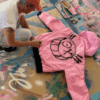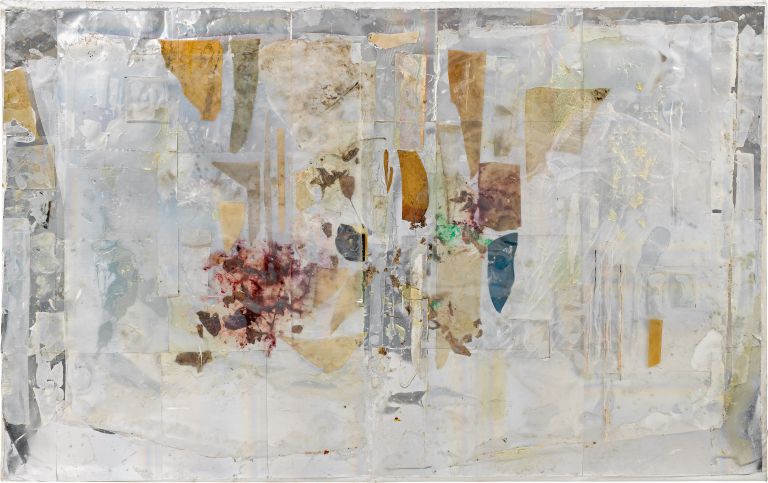Rudolf Polanszky, Text: Alexandra Markl
Market leader
Rudolf Polanszky has „made it“ – not only the Auction House im Kinsky did sell one of his works for a world record price of 126.000 € (hammer price 100.000 €) in June 2019, but New Yorker Gagosian Gallery dedicated a solo show to him in March 2020. Even if the show is now closed due to restrictions regarding the Corona-virus, there is still a video to be seen of this really impressive presentation.
The demand for his works will therefore not lessen, on the contrary. The Auction House im Kinsky is the market leader for Polanszky and has so far achieved the six highest prices between 126.000 € and 32.000 €.
I wanted a second level of experience.
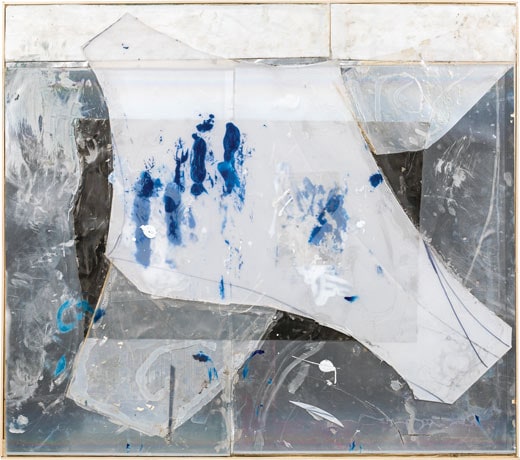
Rudolf Polanszky*
(Wien 1951 geb.)
work nr. 8, Rorschach-transformations, 2010
acrylic glass, aluminium, reflective foil, silicone, resin on canvas; framed; 124 x 140 cm signed and dated on the reverse: Polanszky 2010
Provenance
private property, Vienna
Rudolf Polanszky was born in Vienna in 1951 and first became known in the 1970-ies in the wake of the Viennese Actionists. Like them, he experimented with diverse liquids, as in is “lard paintings” in 1976.
He subsequently created satirical short films like his “semiology of the senses” in 1978, a Super-8-movie in which he sits at a table and gets drunk.
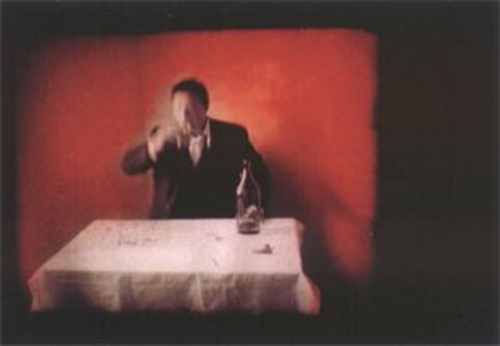
Rudolf Polanszky, Semiology of Senses, 1976, Super 8 transferred to video, 15 minutes 27 seconds. Photo: artforum.com
Today, he reminisces:
I wanted to see what happens when I change. It was not meant to be shown, I just wanted to see it, I had fun doing it. I wanted a second level of experience.
(Rudolf Polanszky in Rudolf Polanszky Transaggregate, Video Cast your art for Galerie Konzett)
Other performative works include the „coil spring paintings” form the 1980-ies, where Polanszky, sitting on a large coiled spring, jumps around a room lined in paper, holding a brush in each hand, and leaving the graphic traces of his uncontrolled movements.
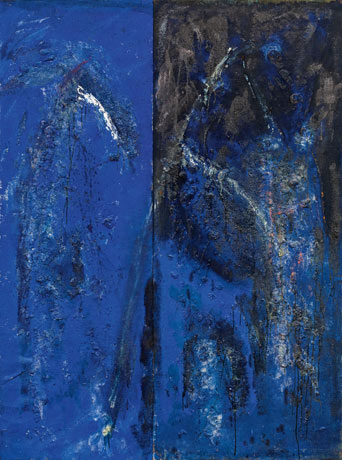
Rudolf Polanszky*
(Wien 1951 geb.)
Untitled, 1986
mixed media on canvas; framed; 180 x 133,5 cm signed and dated on the reverse: Polanszky 86
Provenance
private property, Vienna
Polanszky was looking for a kind of loss of control, aiming to combine a conscious artistic strategy with pure coincidence to create new meaning. He always tried to forego a constructed aesthetic through the principle of randomness. It is his engagement with mathematics, the cognitive science and philosophy that drives him to his own conclusions: how to supersede gridlocked notions of how things have to look like.
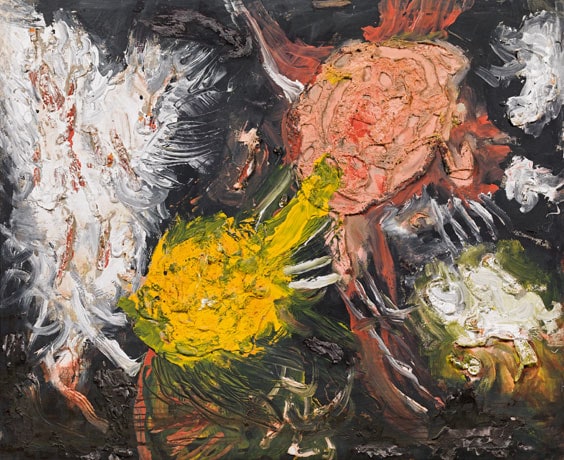
Rudolf Polanszky*
(Wien 1951 geb.)
Untitled, 1983
oil on canvas; framed; 119 x 145 cm signed and dated on the reverse: Polanszky 83
Provenance
private property, Vienna
“The Ad-hoc-synthesis“
This is also true for the “reconstruction” paintings which he started working on in the 1990-ies.
I wanted to eliminate the influence of the conscious. My art is about breaking up these ideas. I called it the “ad-hoc-synthesis.
Rudolf Polanszky in Rudolf Polanszky Transaggregate, Video Cast your art for Galerie Konzett
Here Polanszky creates, „ad hoc“ from already existing materials, a new structure, following an idea of his own. He collects materials that he does not need immediately, like acrylic glass, metal, mirrored foil, resin, wire or foam, leaves them out to the weather, uses them, forgets and finds them again. He never uses any material with the purpose of it fulfilling a certain role – on the contrary, there should not be any utility to them. It is precisely their completely random and meaningless use that creates a specific aura for the artist. He keeps combining the elements anew.
The artist and the art market
What this artist likes, he will not replicate.
What it is good for? Nothing. Isn’t this beautiful: If it wouldn’t be good for anything but would still prevail. This would be the final answer – something worthless forever.
Rudolf Polanszky in Rudolf Polanszky Transaggregate, Video Cast your art for Galerie Konzett
In this, the artist withdraws from the usual art market mechanisms. “It is remarkable that Polanszky is interested above all in the objective, insightful conversation with himself, and in the analyzing of his own perceptions, and is not looking to conform to the art market system.” (Benedikt Ledebur, hyperbolic rooms, Benedikt Ledebur in 2010 in catalogue tot he exhibition Rudolf Polanszky – retrospektiv, ©2018 Konzett Galerie, Wien).
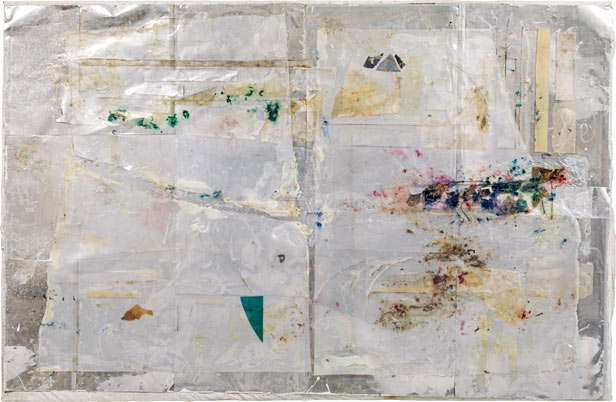
Rudolf Polanszky*
(Wien 1951 geb.)
Untitled, 2005
mixed media on canvas; unframed; 160 x 241 cm signed and dated on the reverse: Polanszky 05
Provenance
private property, Vienna
This truthfulness and sincerity in this artist work is being more and more recognized and valued, is becoming a value per se and elevates his art on to a second level; and this is why he is starting to commend such top prices. He is not only being shown in New York, but has had a solo show at the Wiener Secession in 2018, and his works are being part of the collections of the Belvedere Museum Vienna and the Rubell Museum Miami.
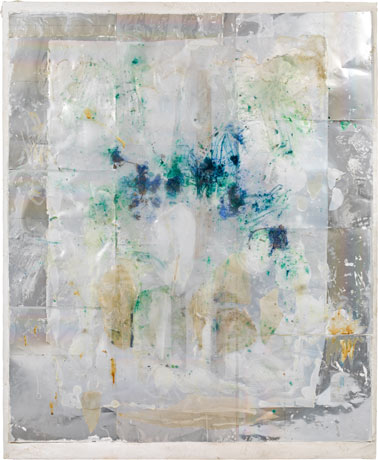
Rudolf Polanszky*
(Wien 1951 geb.)
Untitled , 2005
mixed media on canvas; unframed; 170 x 140 cm signed and dated on the reverse: Polanszky 04
Provenance
private property, Vienna



